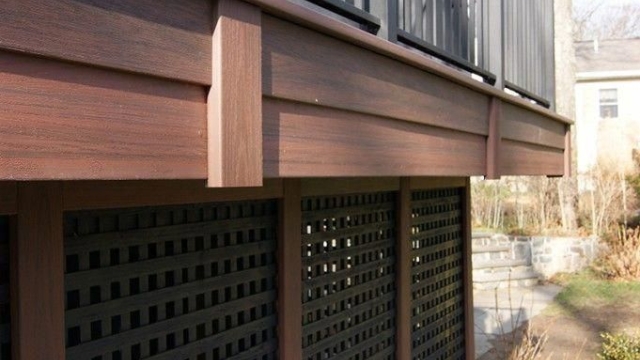
Are you ready to embark on the exciting journey of building your dream deck? Whether you’re a seasoned DIY enthusiast or a complete novice, the art of deck building can be both inspirational and rewarding. With a little creativity, careful planning, and a touch of practicality, you’ll soon be able to transform your outdoor space into a haven for relaxation and entertainment. In this article, we’ll dive into the world of deck building, exploring the key elements, considerations, and steps involved in the process. So grab your imagination, put on your thinking cap, and let’s unleash the deck builder within you!
Getting Started: Tools and Materials
When it comes to embarking on the journey of deck building, having the right tools and materials is essential. It not only makes the process smoother but also ensures the longevity and quality of your deck. In this section, we will explore the essential tools and materials you’ll need to get started on your deck building project.
Tools:
To kickstart your deck building endeavor, a few fundamental tools will prove invaluable. Firstly, a measuring tape is a must-have for accurate dimensions and evenly spaced deck boards. A circular saw will come in handy for cutting the deck boards to the desired length. Additionally, a power drill is essential for securing the boards and fastening the screws. Don’t forget to have a level on hand to ensure your deck is flat and sturdy.Materials:
Choosing the right materials for your deck is crucial in achieving a durable and aesthetically pleasing result. Pressure-treated lumber is a popular choice for the framework of your deck, as it provides resilience against rot and insect damage. For the surface, you can opt for traditional wood decking, such as cedar or redwood, which offer natural beauty and versatility. Alternatively, composite decking materials, which are a blend of wood fibers and recycled plastic, are becoming increasingly popular due to their low maintenance requirements and long lifespan.Safety Equipment:
Always prioritize safety when engaging in any construction project, and deck building is no exception. While not technically tools or materials, safety equipment is essential to protect yourself during the process. Make sure to have safety goggles to shield your eyes from debris and dust, work gloves to prevent splinters and cuts, and a dust mask for respiratory protection when working with certain materials.
By equipping yourself with these essential tools, carefully selecting quality materials, and making safety a priority, you are on the right path to mastering the art of deck building. In the next sections, we’ll delve further into the design aspects and construction techniques, ensuring you have all the knowledge needed to unleash your deck dream.
Designing Your Deck: Key Considerations
When it comes to designing your deck, there are several key considerations that can help you create a winning masterpiece. From selecting the right cards to finding a balance between strategy and synergy, each decision you make will play a crucial role in the ultimate success of your deck.
Card Selection: One of the most important aspects of deck building is choosing the right cards. You’ll want to carefully evaluate the strengths and weaknesses of each card, considering factors such as its power level, versatility, and how well it fits into your overall strategy. Remember, a well-rounded deck should include a mix of creatures, spells, and support cards to cover different situations and optimize your chances of success.
Strategy and Synergy: A successful deck is not just a random assortment of powerful cards, but rather a cohesive unit that works together towards a common goal. Consider the overall strategy you want your deck to follow – whether it’s an aggressive rush, a control-oriented approach, or a combo-based playstyle. Additionally, focus on creating synergy between the cards in your deck. Look for combinations and interactions that allow your cards to enhance each other’s abilities, creating powerful and unexpected plays that can catch your opponents off guard.
Mana Curve: Managing your deck’s mana curve is another key consideration. The mana curve represents the distribution of mana costs across your cards, and ensuring a balanced curve is crucial for consistent gameplay. You’ll want to include a mix of low-cost cards for early-game plays, mid-range cards for board control, and high-cost cards for late-game dominance. Keep in mind that having too many high-cost cards may lead to a slow and unresponsive deck, while too many low-cost cards may result in running out of steam quickly.
In conclusion, designing a deck requires careful thought and consideration. By selecting the right cards, establishing a clear strategy with card synergy, and managing your mana curve effectively, you’ll be well on your way to mastering the art of deck building. So get ready to unleash your deck dream and embark on an exciting journey of competitive play!
Building Your Dream Deck: Step-by-Step Guide
Building your dream deck can be an exciting and rewarding project. Whether you plan to relax with a book, entertain guests, or enjoy meals outdoors, a well-designed deck can enhance your outdoor living space. Follow this step-by-step guide to bring your deck dream to life:
https://deckedoutbuillders.net/
Visualize Your Ideal Deck: Begin by envisioning the perfect deck for your space. Consider the size, shape, and layout that will best suit your needs and complement your home’s architectural style. Take into account any existing landscape features or obstacles that may impact the design.
Plan and Measure: Once you have a clear vision, it’s time to plan and measure the area where the deck will be constructed. Take accurate measurements to ensure that you have the correct dimensions for your materials. Consider the height, depth, and width of the deck, as well as any additional features, such as stairs or railings.
Choose Your Materials: Selecting the right materials is crucial for a durable and visually appealing deck. Options include natural wood, composite decking, or PVC. Each material has its own advantages and considerations, including maintenance requirements, cost, and lifespan. Research and choose the material that best aligns with your vision and budget.
Obtain Necessary Permits: Depending on your local regulations, you may need to obtain permits before building your deck. Check with your municipality to ensure that you comply with any requirements. This step will help avoid potential issues or legal complications down the line.
Create a Solid Foundation: Building a sturdy and long-lasting deck starts with a solid foundation. Prepare the ground by leveling it and using a suitable base material, such as gravel or concrete. Consider consulting a professional if you’re unsure about this critical step.
Frame and Install Decking: Once the foundation is in place, it’s time to start building the frame. Use treated lumber or other suitable materials for the structural components. Ensure that the frame is square and level before proceeding to install the decking boards. Choose your preferred decking pattern, following the manufacturer’s instructions for installation.
Add Finishing Touches: To complete your dream deck, add the finishing touches that will enhance its functionality and aesthetics. This may include installing railings, balusters, lighting, and other accessories. Select materials and designs that complement your overall deck design and desired style.
Remember, safety should be a priority when building your deck. Follow local building codes, consult professionals when needed, and always use the appropriate safety gear. With careful planning and attention to detail, you’ll be well on your way to enjoying your dream deck for years to come.



